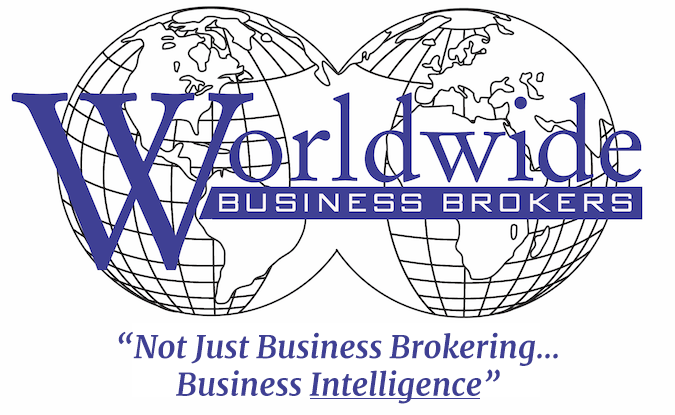Valuations: Owner Benefits
 I did a post about 18 months ago that focused on “Discretionary Earnings” – what they are and how important they are to a business’ value. In that post I used two examples, one of which was a $12.99 subscription to Sports Illustrated magazine by the owner of a sports memorabilia business (or, more meaningfully, a $20,000 trip for the owner and the missuz for a three-day Super Bowl or World Cup Finals weekend).
I did a post about 18 months ago that focused on “Discretionary Earnings” – what they are and how important they are to a business’ value. In that post I used two examples, one of which was a $12.99 subscription to Sports Illustrated magazine by the owner of a sports memorabilia business (or, more meaningfully, a $20,000 trip for the owner and the missuz for a three-day Super Bowl or World Cup Finals weekend).
In that example, the cost of the Sports Illustrated subscription (or the Super Bowl weekend), though ostensibly for “research” for his business, was really an “owner benefit”; that is, those expenses were incurred not for the benefit of the business but rather for the benefit of the owner. When a professional business broker values a business, he or she must be able to identify the expenses that are really for the benefit of the business’ owners because the business’ value will depend on knowing this distinction.
Remember that the value of an operating, profitable business is generally determined by how much money that business will return to the owner – or more importantly, to the buyer, when the business is sold. The buyer is almost always buying that flow of money so the more significant that flow is, the more the buyer will pay for it.

In the case of the sports memorabilia business, the new guy, more comfortable watching his middle-schooler nail Tchaikovsky‘s Piano Concerto #1 at the local auditorium, will likely not spend $20,000 for the opportunity to battle a million fanatic partying lunatics, half of whom have had too much to drink and a sizable percentage of whom haven’t the slightest idea who’s even playing. In this case, that $20,000 just sits in the bank account, appears in the bottom line on both the financial statements and tax returns, and increases the value of the business noticeably.
There are many legitimate expenses that benefit the owners of businesses but are not necessarily required to operate the business. There are also expenses that might not be so legitimate (from a tax standpoint) but nonetheless can be expensed with little risk that the tax authorities will notice. Here are two examples from our files.
Owner Benefits: Case Study #1
We had a client that owned an equipment sales and rental business that had revenue of about $5 million but showed less than $50,000 in taxable income – less than 1% of revenue. As we analyzed the financial statements, we discovered, among many other things that needed adjustments, an unusual rental expense.
It turned out that the company rented a 10-bedroom luxury beach house on an annual basis and used it for company retreats as well as rewards for stellar-performing employees; each month, the employee of the month was given a free weekend at the beach – a heck of a lot better than a cake and the best parking space in the company lot for a month, eh?
But, of course, this was a benefit to the owner because, over the course of an entire year, the beach house was mostly unused. This meant that the owner, his family, his friends, his fishing buddies and anybody else he wanted to impress had the use of the beach house at all other times.
And use it they did, Bucko! Our boy sported a deep, year-round tan and every month or so there was a new batch of fishing photos on the walls of his office. Owner benefits!
 The kicker of this example is that the owner of the business also owned the beach house – although in a different entity – effectively renting it from himself, a fabulous way of getting money out of his business, paying off his beach house and sheltering tens of thousands of dollars in profits, all of which was legal (at the time of this writing).
The kicker of this example is that the owner of the business also owned the beach house – although in a different entity – effectively renting it from himself, a fabulous way of getting money out of his business, paying off his beach house and sheltering tens of thousands of dollars in profits, all of which was legal (at the time of this writing).
But the owner of the business could have rented a conference room at the Marriott or Sofitel for the retreats and given the employee of the month a $100 bonus, a plague and a handsome new branded shirt – and if he did so, the bottom line – and his tax liability – would both have been a hell of a lot higher.
A professional business broker/advisor must be able to identify expenses such as this, pull them out and make the adjustments that separate them from the real expenses – in this case, the cost of the hotel conference room and the $100 monthly bonus, a plaque and a handsome new branded shirt.
Owner Benefits: Case Study #2
Here’s another beauty.
We had a client with a logistics and distribution business. He owned and leased a number of distribution warehouses in commercial distribution hubs and a small trucking company. He sub-leased warehouse space to shippers that received trailer-loads of goods from overseas manufacturers. Those shippers delivered their trailer-loads to his warehouses to break the loads down and reload them on other trucks to be delivered, in turn, to local distribution facilities in various cities throughout the country.
He also owned an extensive exotic car collection.

As anyone who has ever collected cars knows, the best way to preserve a valuable car is to store in a dry, low-humidity environment – a desert comes immediately to mind. A warehouse in an industrial park outside Las Vegas might be just the place to keep his very valuable collection in perfect condition.
His business leased a 150,000 square foot warehouse and the cost of that lease – lease payments, insurance, maintenance, utilities, etc was roughly $12 per square foot annually, or $1.8 million – showed up on the company’s financial statement.
But this cost was nothing more than a benefit to the business owner and it had to be removed from the expense column which, with a number of other adjustments, increased the bottom line.
Except in very small, “Main Street” businesses, these tactics of sheltering income and extracting profit from a business are commonplace and business brokers must know how to ferret them out. A $5 million (revenue) equipment rental business valued on the basis of a $50,000 taxable income will result in a value that is significantly lower than what it is likely to be if an in-depth financial analysis is performed and the appropriate adjustments are made.
The same can be said of a logistics and distribution business whose bottom line is negatively impacted by a $1.8 million dollar rental charge (hidden in costs for leasing a dozen other warehouses around the country).
This “ferreting out” is done in a process we refer to as “recasting the earnings”, a step without which no business is likely to be properly valued.
Learn how to broker small and mid-size businesses…
These are just two of our many War Stories – “Dispatches From the Front”, if you will – from our nearly 20 years in the business of valuing, selling and consulting for small and mid-size businesses around the world.
The Next “Questionable” Line Item
But there is another category of expense that can significantly impact a business’ value if it is not recognized as a “non-operational” expense and we have just encountered a perfect example of it with a business for which we are consulting as preparation for coming to market in about two years. I’ll detail this one in next week’s post so, if you’ve not yet subscribed, do so to assure that you don’t miss it. And, if you’re a professional business broker, share these couple of posts with your clients – whether they are business owners thinking of selling or buyers looking for the right business at the right price.
If you have any questions, comments or feedback on this topic – or any topic related to business – I want to hear from you. Put them in the Comments box below. Start the conversation and I’ll get back to you with answers or my own comments. If I get enough on one topic, I’ll address them in a future post or podcast.
I’ll be back with you again next Monday. In the meantime, I hope you have a profitable week!
Joe
#business #howto #sellabusiness #becomeabusinessbroker #businessbrokering #businessvaluation
The author holds a certification from the International Business Brokers Association (IBBA) as a Certified Business Intermediary (CBI) and can be reached at jo*@*******************og.com

